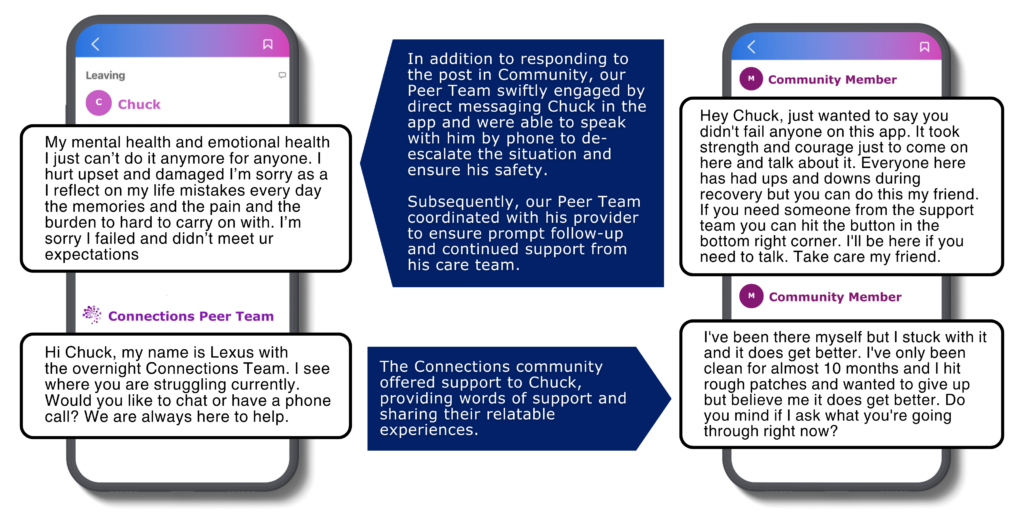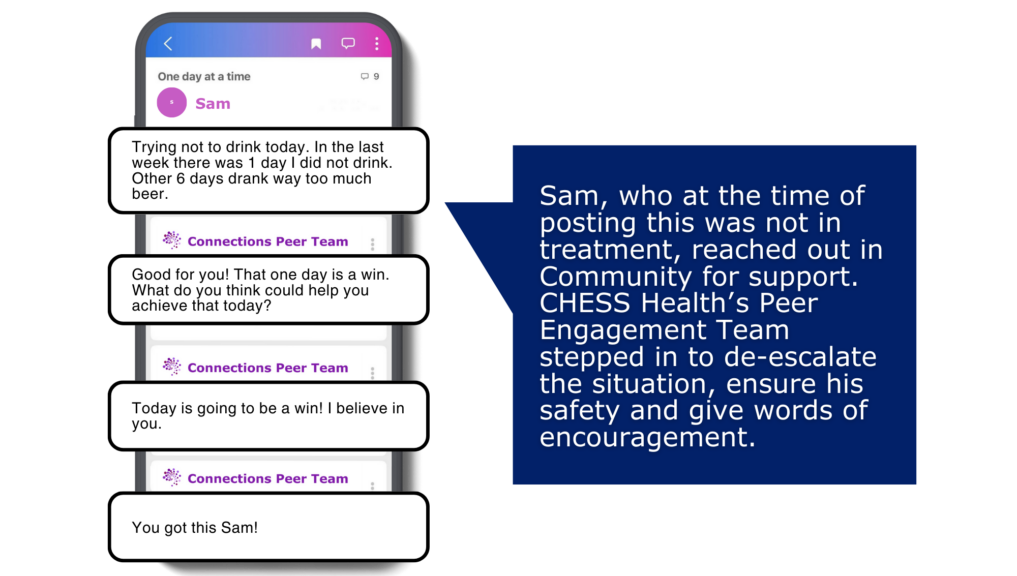
In 2023, the number of people who died from drug overdose in the United States in one year exceeded 112,000, the most significant substance use and overdose epidemic ever recorded. Drug deaths began to rise in 2020 with the onset of the worldwide pandemic. They spiked with the availability of increasingly lethal substances such as fentanyl, which is 50 times stronger than heroin.
Despite these alarming statistics, the 2022 National Survey on Drug Use and Health reveals that 96% of the nearly 48.7 million Americans with substance use disorder (SUD) do not believe they need treatment. This means that tens of millions of Americans are actively using drugs and, at this time, not seeking treatment. And of those that do seek treatment, abstinence is difficult to maintain. About 40-60% will relapse, according to the National Institute on Drug Abuse (NIDA).
In 2022, funds from the $54 billion National Opioid Settlement began flowing to states and localities to fight the epidemic of drug use and overdose. The settlement stipulates funds must be spent on addiction treatment, harm reduction, and prevention, and the list of core strategies guides communities toward approved uses.
All three approaches contribute to reversing this devastating trend, with harm reduction, in particular, showing promise as a way to stem this tide. Harm reduction is a compassionate philosophy paired with practical strategies that aim to minimize the negative consequences associated with drug and alcohol use without requiring abstinence. This approach recognizes the multifaceted nature of drug and alcohol use, empowering individuals to make informed choices about their well-being while prioritizing the dignity and well-being of people who use drugs.
Empowerment with prevention and harm reduction strategies
Prevention and harm reduction shifts the focus away from punitive measures to evidence-based interventions that seek to prevent or reduce the harms associated with drug or alcohol use, like overdose, transmission of infectious diseases, and social isolation. Prevention aims to identify and intervene or mitigate the onset or progression of SUD. At the same time, harm reduction acknowledges that drug and alcohol use is influenced by social, economic, and environmental factors and that, for many individuals, abstinence may not be a feasible or desirable goal at a certain point in their lives.
Both approaches are focused on removing judgment from support and services while empowering individuals who use drugs and/or alcohol to make informed choices about their health and well-being. In fact, individuals with SUD often are more accepting of harm-reduction measures because they retain control of when and how they engage with the services. This connection is critical as a pathway to recovery treatment if and when the individual is ready to seek it. In addition, people with lived experience are involved in designing and implementing programs, which also helps to build trust with the individuals it serves.
Multiple studies have demonstrated the effectiveness of prevention and harm-reduction strategies in preventing overdose and death, whether from drug or alcohol use or the stigma and loneliness that stems from it.
Prevention and harm reduction strategies include:
- Education and outreach
- Needle exchange programs
- Safe injection sites
- Medication therapy for opioid addiction
- Naloxone (Narcan) distribution
- Support groups and counseling
- Digital health tools
Meeting People Where They Are
The CHESS Health solutions have proven to be a vital tool in supporting harm reduction and prevention through community-wide prevention efforts and real-time digital intervention to ongoing support.
Community Prevention Efforts
Prevention of substance use disorder (SUD) is invaluable, as it intervenes early to mitigate the onset and progression of problematic substance use. By addressing risk factors and promoting resilience, prevention efforts improve health outcomes, yield significant cost savings, and promote equity and social justice. Through community engagement and empowerment, prevention programs create supportive environments that foster long-term health and well-being, ultimately reducing the individual, societal, and economic burdens associated with SUD.
Often, people with SUD don’t think they need help. A county in Ohio recently began using CHESS Health’s ePrevention solution as a harm-reduction approach to helping individuals assess their drug use. A QR code with a link to the automated Screening, Brief Intervention, and Referral to Treatment (SBIRT) assessment was placed on the cardboard sleeves at coffee shops and in other public locations, enabling individuals to evaluate their level of use privately, access educational materials and other resources, join a recovery support community, and self-refer to treatment, if desired. Like other prevention measures, the individual completing the screening maintains autonomy throughout.
Effective Harm Reduction Measures
In-person services such as needle exchanges are instrumental in fighting the spread of infectious diseases like HIV and hepatitis C, and naloxone can reverse an overdose. Digital tools, such as CHESS Health’s Connections app, provide an always-on lifeline that works alongside other measures and fills in gaps in recovery support for individuals who are unable or unwilling to seek in-person assistance. This app is also used to engage individuals who are not yet ready to enroll in a treatment program but want a community where they can have support.
The National Council for Mental Wellbeing recently published an article focusing on the movement for reparative social justice and how a commitment and connection to community engagement including and led by public safety officers is paramount to the success of this initiative.
The evidence-based Connections app, part of CHESS Health’s eRecovery solution, features a virtual community moderated 24/7 by a certified peer engagement team. Having moderators with lived experience offering encouragement and crisis response is meaningful to people using the app, especially those who are seeking support but are not yet in treatment for their drug or alcohol use. Building relationships through the community keeps these individuals connected to people who are ready to help them, no matter what is needed.
A recent case study showcased how CHESS Health is working with organizations to enhance support for individuals with SUD by fostering community connections to address co-occurring challenges. It shows how eIntervention can link various community organizations efficiently through a closed-loop referral system, guiding individuals to necessary resources for stability and health.
Chuck & Sam’s Story; The Impact of Always On Community and Peer Support
Recent posts in the Connections community, which is part of the eRecovery solution, illustrate the power of this tool in preventing dire outcomes.
In the first instance, an individual we’ll call Chuck to protect his identity posted a distress call on the Connections app shortly after midnight: “My mental health and emotional health I just can’t do it anymore for anyone I hurt upset and damaged I’m sorry as I reflect on my life mistakes every day the memories and the pain and the burden (are) too hard to carry on with. I’m sorry I failed and didn’t meet your expectations.”
Within three minutes, a peer moderator sent a direct message to Chuck, followed by a phone call. Chuck responded to the direct message, and the Connections Peer communicated with him on the app and over the phone until the peer felt confident the moment of risk had passed.
The peer then notified Chuck’s provider and followed up with Chuck afterward. Chuck continues to log on to the app daily and is doing well.


An important aspect of Connections is that not everyone on the app is in recovery, creating a safe space for individuals who are still actively using to receive support.
In a recent post, Sam (alias) candidly expressed struggles with alcohol consumption, feeling conflicted despite not wanting to continue.
Peers promptly responded with supportive and non-judgmental messages, fostering a safe and encouraging environment within the app.
Offering individuals like Sam a secure space to share vulnerabilities and find support is crucial in harm reduction strategies, ensuring they are aware that support and care are available when needed.
Impact of Digital Solutions
Rapid intervention in risky moments and referring individuals to care, as Chuck’s and Sam’s cases reveal, is one of the powerful benefits of digital harm reduction. As providers, organizations, and state, regional, and local authorities determine how to address the staggering growth in SUD and overdose deaths, it is imperative that opioid settlement and grant dollars are spent on ways to provide comprehensive outreach and support, including evidence-based digital health tools. These strategies keep individuals with substance use disorder connected to others and within easy reach of additional services if they are needed or wanted. Recognizing and harnessing effective tools in prevention and harm reduction not only saves lives but also alleviates strain on healthcare systems, equips providers with essential resources, and champions the dignity and well-being of those affected by SUD.
